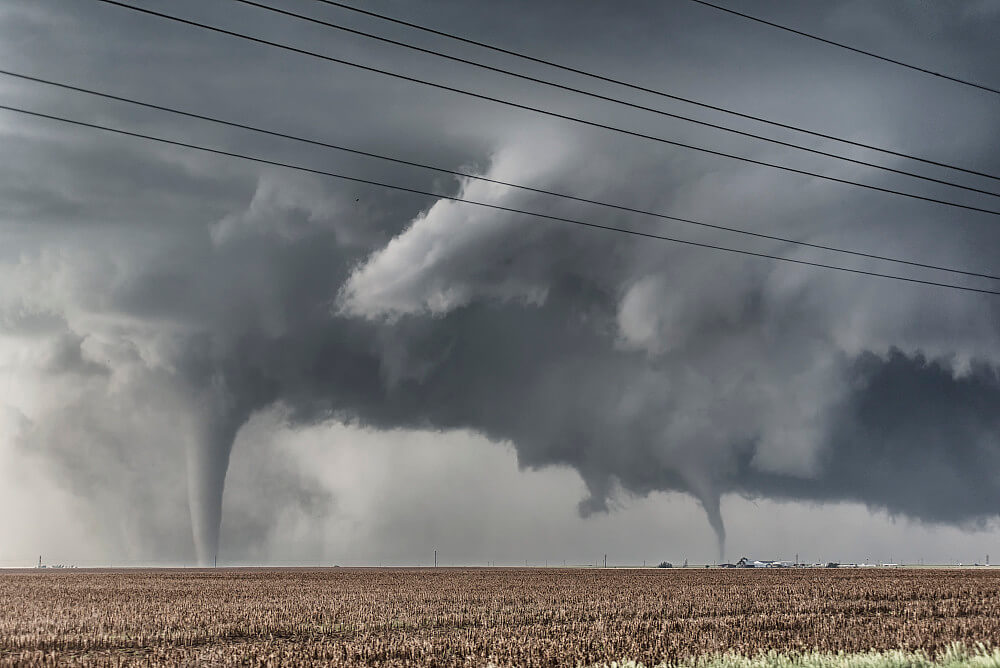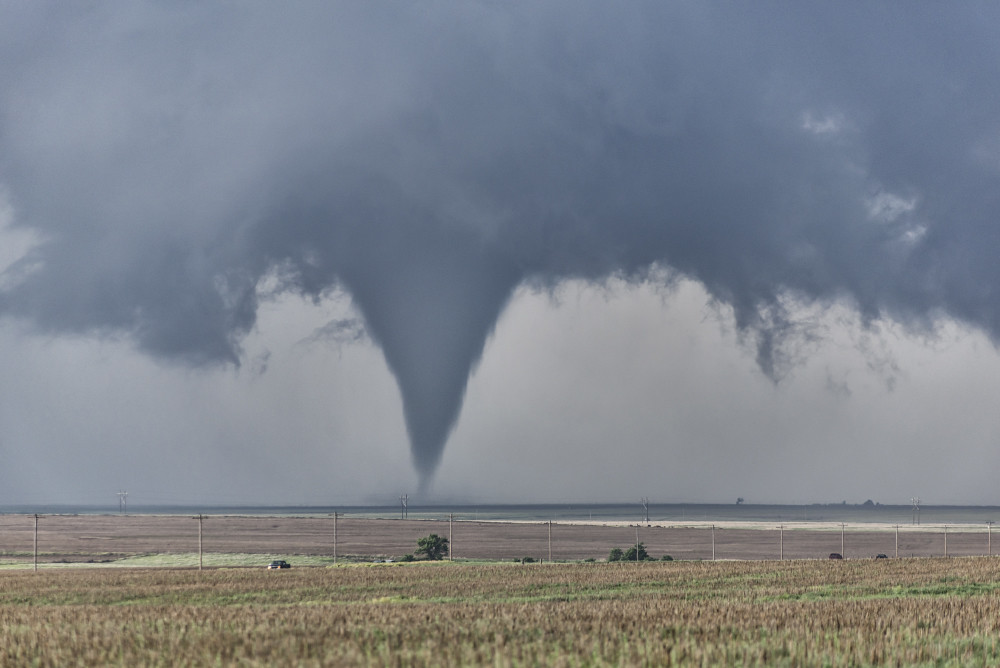If you’re a regular reader here, then you’ll know just how dangerous but mesmerizing tornados can be.
In this post, we’re going to take a closer look at tornadoes, and more specifically the center of them. A question I see many asking is do tornadoes have eyes?
In short, no, tornadoes do not have eyes. There is a circular opening at the top of the tornado but it is not quite an eye like you would find in a hurricane.
Let’s take a closer look…
Do Tornadoes Actually Have Eyes?
Although tornadoes do not have eyes, like that of a hurricane. Many people consider the epicenter of the tornado’s vortex to be an eye.
One of the reasons people believe that there is an eye of a tornado is because of films such as “Twister” and “The Wizard of Oz“, but these are fiction.
The inside of a tornado is a low-pressure area in which the air is much smoother than on the outside.
The air is stable and on the path deemed by the circulatory flow of the storm.
Is It Calm In The Center Of A Tornado?
Although there is not a lot of factual information about the inside of a tornado.
There is increasing evidence such as eye-witness accounts and mobile radar images that suggest the inside of a tornado is calm and clear, with extremely low pressure.
The reason the center of the tornado is calm is that the winds that are converging toward the center never actually reach it.
The Coriolis Force deflects the winds away from the center which causes the wind to rotate around the center but leaves the center calm.
Although it would be terrifying being in the center of a tornado, as you’ll likely be witnessing debris and potentially cars and livestock floating past you (literally), people have survived it.
Can You Survive Being In The Center Of A Tornado?
Unlike many natural disasters, there are many people who have survived being inside the center of a tornado.
People have been lifted up to heights of around a 1/4 mile and safely put back down by tornadoes with only minor injuries
This sounds crazy, but it’s true.
One example of someone surviving being in the center of a tornado is Matt Suter. He was 19 years old when he got caught up in the inside of a tornado.
Suter was in his grandmother’s mobile home at the time when a powerful EF2 tornado ripped through and swept him up.
Records show that he was unconscious during this time because he had been hit over the head with a lamp when in the mobile home.
The NEW GPS system measured from the mobile home to the field where Suter woke up as 1307 feet away, roughly 1/4 mile.
There are multiple cases of people surviving being in the center of tornadoes which is fascinating. There have even been people who have recorded being inside a tornado and uploaded the footage to Youtube.
How Big Is The Center Of A Tornado?
Each tornado is slightly different, which is why they are so fascinating and why scientists still don’t know a whole lot about them.
The size of the center of a tornado is largely going to depend on it’s size. If it’s a large tornado such as an EF4 or EF5, it will likely have a wider base than smaller tornadoes.
That said, even the smallest tornadoes have a narrow center as this is the part where it connects with the ground.
The average width of a tornado is between 300 – 500 yards, but the closer you get to the ground the smaller this space becomes.
Final Thoughts
Do tornadoes have eyes? No, not like the eye of a hurricane anyway.
Tornadoes do have an epicenter that is much calmer than the violent storms on the outside, so calm in fact that people have survived being in the middle of them.
The center of a tornado, although calm and potentially survivable is somewhere that you do not want to find yourself.
Hopefully, this post has been helpful and you’ve earned something new today about the center of tornadoes.
Thanks for taking the time to read this post and feel free to stick around and learn more about tornadoes.

Hey, I’m Sam – the founder of GustyPlanet. I’ve had a fascination with all things weather for as long as I can remember. I witnessed my first tornado at the age of 6, and since then became an avid storm chaser that is hooked on learning as much as I can about extreme weather. This blog was created to share my knowledge and to expand and delve deeper into the wonderful world of weather phenomena. I hope you enjoy your stay here and thanks for visiting.







